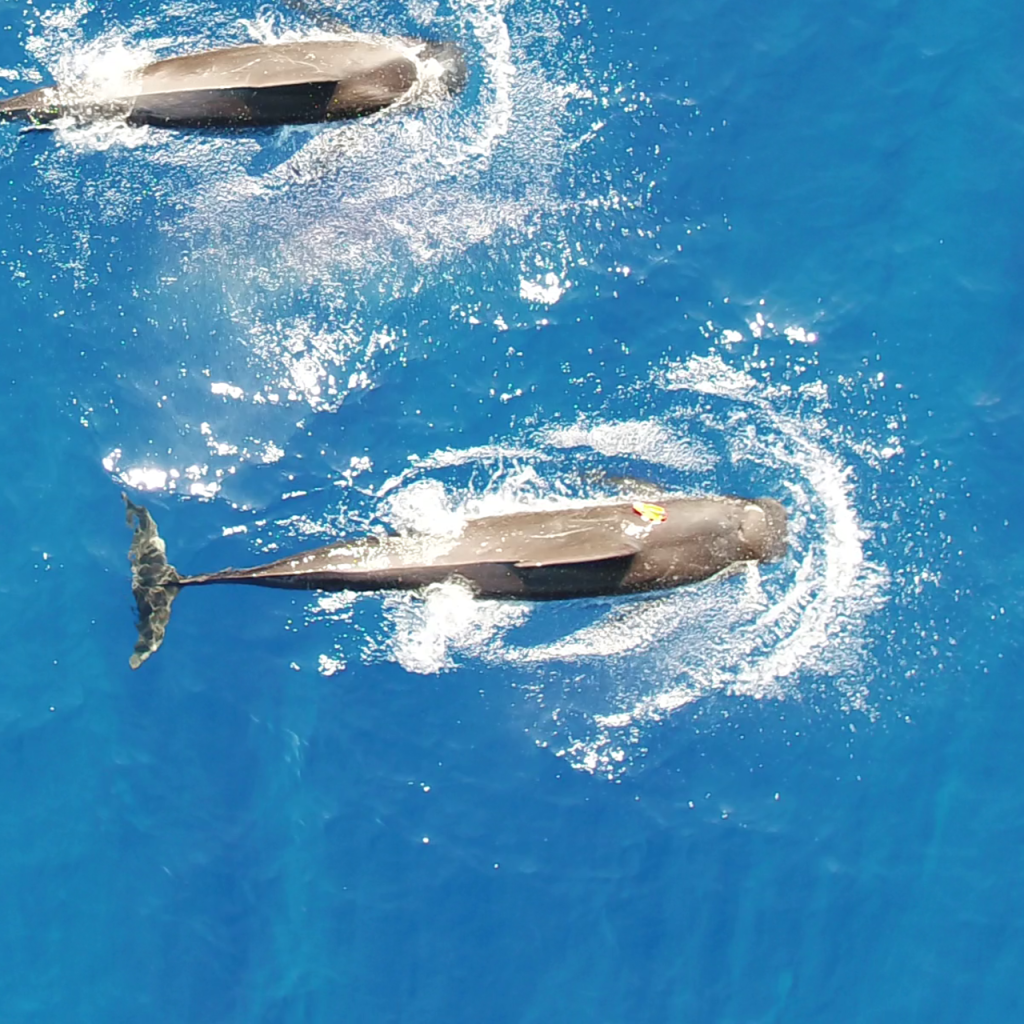Scientists Reveal the ‘Energy Budget’ of Short-Finned Pilot Whales

For the first time, scientists have calculated a detailed “energetic budget” for Hawaiʻi’s short-finned pilot whales, revealing what it takes to power their extreme, 2,600-foot dives for food.
A new study led by the University of Hawaiʻi’s Hawaiʻi Institute of Marine Biology found an average adult whale must eat 142 squid daily to survive, scaling up to 416 million squid annually for the entire population of short-finned pilot whales. The data, published in the Journal of Experimental Biology, provides a benchmark for protecting the historically understudied marine mammals.
“Pilot whales are one of the only oceanic dolphins that regularly dive to extreme depths—up to 1,000 meters—to find prey,” said William Gough, Marine Mammal Research Program (MMRP) postdoctoral researcher and lead author of the study. “This deep-diving, high-risk foraging strategy requires a delicate balance between the energy they spend and the energy they acquire. Our study is the first step in quantifying that balance for this specific population.”
The deep waters surrounding the Hawaiian Islands are home to a genetically distinct population of short-finned pilot whales. These highly social, toothed whales are not migratory; they remain with their tight-knit, multi-generational families in one region for life. The population forages year-round where they pursue their preferred prey: squid.
Using high-tech tags on eight pilot whales off Lānaʻi between 2021 and 2024, researchers measured movement, depth, sound and video to estimate energy use during dives. They also analyzed the stomach contents of a stranded whale and recorded the animals’ rapid “clicks” during hunts to determine their diet and prey success rate.
The researchers said that understanding precisely how much energy the animals require is essential for understanding how to effectively manage against threats and ensure their survival.
“Deep-diving species like pilot whales are especially vulnerable to human-induced disturbances, such as noises from ships or changes in ocean temperature, which can disrupt foraging or increase their energetic costs,” Gough said. “If they use more energy than they can find, they face an energy crisis that weakens their health, hurts their ability to fight off disease, and ultimately limits their ability to reproduce and recover the population.”
Despite this inherent vulnerability, the Hawaiian pilot whale population benefits from a stable and abundant squid food source, which may better equip them to cope with environmental disturbances than populations elsewhere.
Pilot whales are currently listed as “data-deficient” by the International Union for Conservation of Nature, despite having relatively large population sizes. This classification means scientists lack the information they require to accurately assess their risk of extinction. MMRP plans to apply these scientific methods to estimate the energetic expenditure of other cetacean species, from the harbor porpoise to the blue whale, with the goal of establishing a global benchmark for marine mammal conservation.
The report can be accessed at Journal of Experimental Biology.



